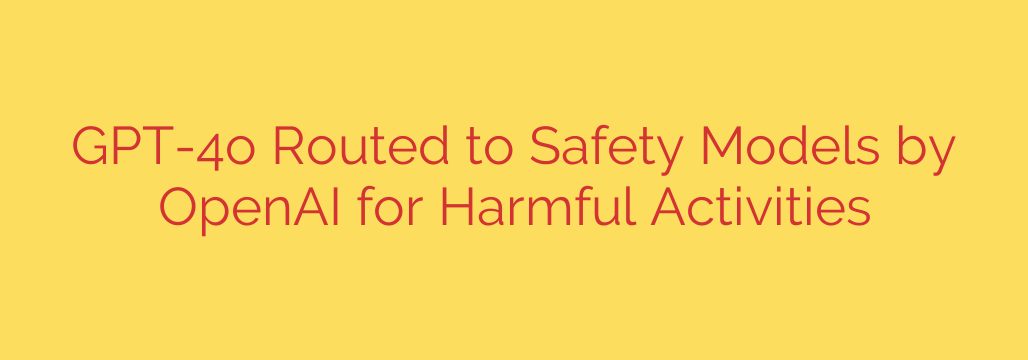
The Hidden Layer of AI Security: How GPT-4o Handles Dangerous Requests
As artificial intelligence models grow more powerful, so do the concerns about their potential for misuse. With capabilities that span text, audio, and vision, advanced AI like GPT-4o represents a monumental leap in technology. However, behind its impressive performance lies a sophisticated and crucial safety system designed to protect users from harmful content. This system goes far beyond simple keyword filters, employing a dynamic, multi-layered approach to ensure responsible operation.
The key to this advanced security is not just about blocking bad requests, but intelligently understanding and redirecting them. When a user enters a prompt that could potentially violate safety policies, it triggers a specialized protocol. Instead of the main GPT-4o model processing the request, the prompt is automatically rerouted to a dedicated, highly trained safety model.
What Are Specialized Safety Models?
Think of these safety models as AI security specialists. They are smaller, more focused neural networks that have been exclusively trained for one purpose: to analyze incoming prompts for specific types of harmful content. Rather than having a single, massive model try to be an expert in everything from poetry to threat detection, this method delegates the critical task of safety to a dedicated expert.
This intelligent routing system is designed to classify and act on a wide range of policy violations, including:
- Hate speech and harassment
- Content related to self-harm
- Depictions or encouragement of extreme violence
- Content that poses a risk to child safety
By using a specialized model, the system can perform a much more nuanced and accurate analysis of the user’s intent, distinguishing between a novelist writing about a fictional crime and a user seeking instructions for illegal activities.
The Benefits of a Layered Defense
This multi-model approach offers significant advantages over traditional content moderation techniques, creating a more robust and intelligent safety net.
- Greater Accuracy and Nuance: A specialized model is far more effective at understanding context. It can recognize subtle cues and patterns associated with harmful intent, reducing the number of “false positives” (blocking safe content) and “false negatives” (allowing harmful content to slip through).
- Improved Efficiency: This architecture allows the primary GPT-4o model to focus on what it does best—generating helpful and creative responses. Offloading the intensive task of safety analysis to a dedicated system ensures that overall performance remains fast and reliable.
- Enhanced Scalability and Adaptability: The digital threat landscape is constantly evolving. With a modular system, security teams can rapidly train, update, or deploy new safety models to address emerging threats without having to retrain the entire foundational model.
What This Means for Users: AI Safety Best Practices
Understanding how these safety systems work can help you use AI tools more effectively and responsibly. Here are a few key takeaways:
- Understand the Boundaries: All major AI platforms operate with strict safety policies. Attempting to “jailbreak” or deliberately bypass these safety measures is a violation of terms of service and may result in warnings or account suspension.
- Be Clear and Ethical in Your Prompts: The clearer your intent, the less likely your prompt will be accidentally flagged by the safety system. Strive for transparent and ethical use cases to ensure the best results.
- Utilize Reporting Features: No system is perfect. If you ever encounter a response that seems inappropriate or harmful, use the built-in reporting tools. This feedback is invaluable for training and improving the safety models for everyone.
Ultimately, the future of AI hinges on a delicate balance between pushing the boundaries of capability and implementing unwavering safety protocols. The use of specialized safety models is a critical step forward, demonstrating a commitment to building a secure and responsible AI ecosystem where innovation can flourish without compromising user well-being.
Source: https://www.bleepingcomputer.com/news/artificial-intelligence/openai-is-routing-gpt-4o-to-safety-models-when-it-detects-harmful-activities/








